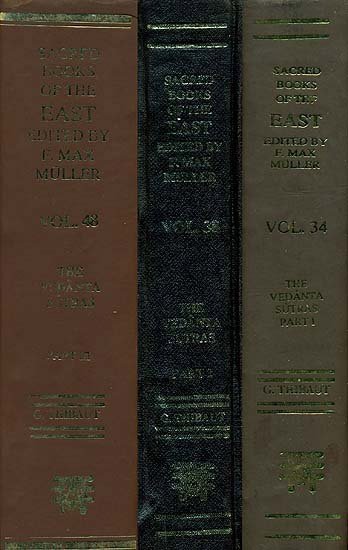Brahma Sutras (Ramanuja)
by George Thibaut | 1904 | 275,953 words | ISBN-10: 8120801350 | ISBN-13: 9788120801356
The English translation of the Brahma Sutras (also, Vedanta Sutras) with commentary by Ramanuja (known as the Sri Bhasya). The Brahmasutra expounds the essential philosophy of the Upanishads which, primarily revolving around the knowledge of Brahman and Atman, represents the foundation of Vedanta. Ramanjua’s interpretation of these sutras from a V...
Sutra 3.2.10
10. In the swooning person there is half-combination; this being the remaining (hypothesis).
With regard to a person lying in a swoon or stunned, the question arises whether that state of swoon is one of the other states, viz. deep sleep and so on, or whether it is a special condition of its own.—The former alternative must be accepted. For the term 'swoon' may be explained as denoting either deep sleep or some other acknowledged state, and there is no authority for assuming an altogether different new state.—This view the Sūtra sets aside. The condition of a swooning person consists in reaching half, viz. of what leads to death; for this is the only hypothesis remaining. A swoon cannot be either dreaming or being awake; for in a swoon there is no consciousness. And as it is different in character as well as in the occasions giving rise to it from deep sleep and death, it cannot be either of those two states; for there are special circumstances occasioning a swoon, such as a blow on the head. The only possible alternative then is to view a swoon as a state in which there is made a half-way approach to death. For while death consists in the complete cessation of the soul’s connexion with the body or organs of any kind, a swoon consists in the soul’s remaining connected with the subtle body and organs only. Here terminates the adhikaraṇa of 'the swooning person.'
